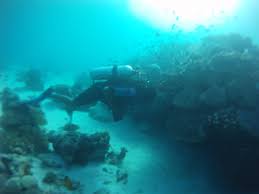
Best diving season
The best time to dive in Socotra is from March to April, when the sea conditions are at their calmest, providing excellent visibility and a comfortable water temperature. During these months, divers can experience the full splendor of Socotra’s underwater world, with flourishing coral reefs and abundant marine life. The clear waters make it ideal for spotting a variety of fish species, as well as larger marine creatures such as dolphins and rays. Plan your visit during this period to ensure the most enjoyable and memorable diving experience.
DIVING TOUR

DIVING TOUR
Its unique diving spots and calm waters make it an ideal scuba diving location. From coral reefs rich with marine life, to old wrecks perfect for exploring, Socotra has it all. The island and its surroundings are excellent for a serene getaway, as the climate is warm and soothing, and the virgin landscape is breathtaking.
Diving in Socotra is almost possible all year long, but it’s best from September to October, and from March to May, because of the monsoon season. During that period, the visibility is the highest, even though it generally ranges from 10 to 40 meters, making visiting the sites all the more enjoyable.
Socotra has plenty of interesting diving spots, such as the Sunrise Wreck, a sunken vessel that has created an artificial reef in the very center of the bay at a depth of 25-27 meters. A thrilling dive, because it can often have currents, and old fishing nets entangled in the ship’s gear that can offer a danger to the diver, the Sunrise Wreck is a beautiful place. Around February-March the waters are very calm and it’s possible to see tens of species of fish schooling around the wreck.
NOTABLE DIVE SITES IN SOCOTRA
Dihamri Marine Protected Area that is famous for its variety of fish species and corals, it has five diving spots – the deepest is 50m.
Adho & Rosh Marine Protected Area is known for a reef that stretches about 1km off the coast, a place where night dives are suitable. The depth is 10-15 meters.
Adho : 2 diving sites with dives up to 30 meters.
Eastern Cape Ras Di Erissel is a place where ships have been colliding with rocks for centuries, and some of the wrecks still haven’t been explored completely
